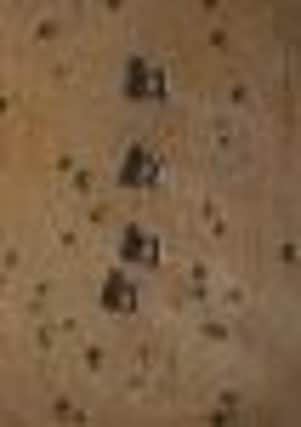Wild World by Ben Waddams: A home where the buffalo roam...


Flying in a light aircraft over the desert and savannah of Namibia, is not the most rewarding experience wildlife-wise.
The only animals you can really appreciate from this vantage point,are the exceedingly big ones.
Advertisement
Hide AdAdvertisement
Hide AdOn the continent of Africa, the elephant, hippo, rhino and buffalo are the main contenders for Biggles-esque naturalists.
However in Namibia there are very few desert elephants, a handful of rare rhinos and scant rivers providing negligible chances for hippo-watching.
As for buffalo, there is none … at least there none now. Why might this be? Not because of hunting but, ironically, because one ungulate is swapped for another. Buffalo have been swapped for cattle.
In southern Africa, there are, sadly, still frequent bouts of foot and mouth disease. It has been deemed that domestic livestock must come before wildlife and so veterinary fences have been erected around the entire northern part of the country.
Advertisement
Hide AdAdvertisement
Hide AdThis keeps the cattle in and the buffalo (the main carriers of foot and mouth) out.
Buffalo, however, play a key ecological role as a bulk grazer, one that smaller domestic cattle cannot fulfil.
By removing a large overburden of tall grasses, they create access for other large mammals which would normally avoid such habitats.
If you have buffalo on your land, their grazing tends to alter the grass make up in a manner which favours other grazers and so you attract more species of herbivores and in turn, carnivores.
Advertisement
Hide AdAdvertisement
Hide AdCape buffalo are one of my favourite animals so I was slightly annoyed to be told by the pilot that there were none actually in the country.
However, ‘he would see what he could do’. Flying low over the border, there is one small section of veterinary cordon which contain a handful of the creatures.
These are kept in quarantine as an experiment to see if they can cope with the new Namibian landscape of farms and cattle ranches.
Ducking and weaving over the treetops we circled for an eternity until we picked out a couple of shady looking bulls skulking in the shade. Irritated by our presence, they lumbered off and I got my reference material.
Advertisement
Hide AdAdvertisement
Hide AdBut how does this tie in with Bucks? Well, our ungulates (deer) are not all they appear to be. Our most common species, the roe deer, are a natural part of the Buckinghamshire landscape, but a smaller ‘micro-deer’ is invading our county – the Muntjac.
The muntjac deer was first kept in quarantine over at Woburn and was observed to see how it reacted to the British climate (as opposed to an Indian one). Needless to say a handful escaped and now they are spreading northwards at an alarming rate.
Fortunately it’s not foot and mouth they carry, but a voracious appetite for small, young shoots and leaves from newly-coppiced or growing trees, stripping them bare until they die.
With much of our ancient and semi-natural woodland gone or under threat, this behaviour is detrimental to woodland wildlife, from butterflies to bats.
Advertisement
Hide AdAdvertisement
Hide AdIt has been argued that the decline in British woodland birds is down to the muntjac – why?
Because they browse the understory [the group of small trees, shrubs and vines that grow under the taller trees] and wreck the nesting sites of birds such as the marsh tit and the turtle dove.
This is not actually true because they are so small, they cannot reach the mature understory of bushes and trees.
However, there is a problem when it comes to low-level nesters like the nightingale and blackcap.
Advertisement
Hide AdAdvertisement
Hide AdThe truth is that, love them or loathe them, like the grey squirrel and the brown rat, muntjac are here to stay.
If people have a problem with their disturbing birds, then address the cat problem first, not a wild animal’s ability to survive and succeed in a strange land.
> Ben’s wildlife art can be seen online at: www.waddams.webs.com